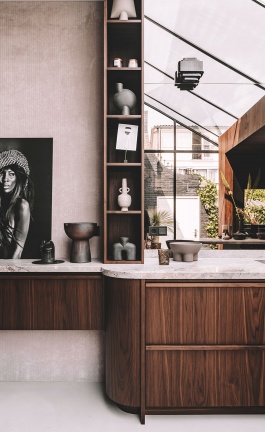Project Name
The Chuan Malt Whisky DistilleryLocation
Design Studio
Neri&Hu Design and Research OfficeArea (sqm)
7350Client
Pernod RicardCompleted
Nov 2021| Detailed Information | |||||
|---|---|---|---|---|---|
| Project Name | The Chuan Malt Whisky Distillery | Location |
Yansi Village, Gaoqiao Town, Emeishan Leshan Sichuan Sheng 614206
China | Design Studio | Neri&Hu Design and Research Office |
| Area (sqm) | 7350 | Client | Pernod Ricard | Completed | Nov 2021 |
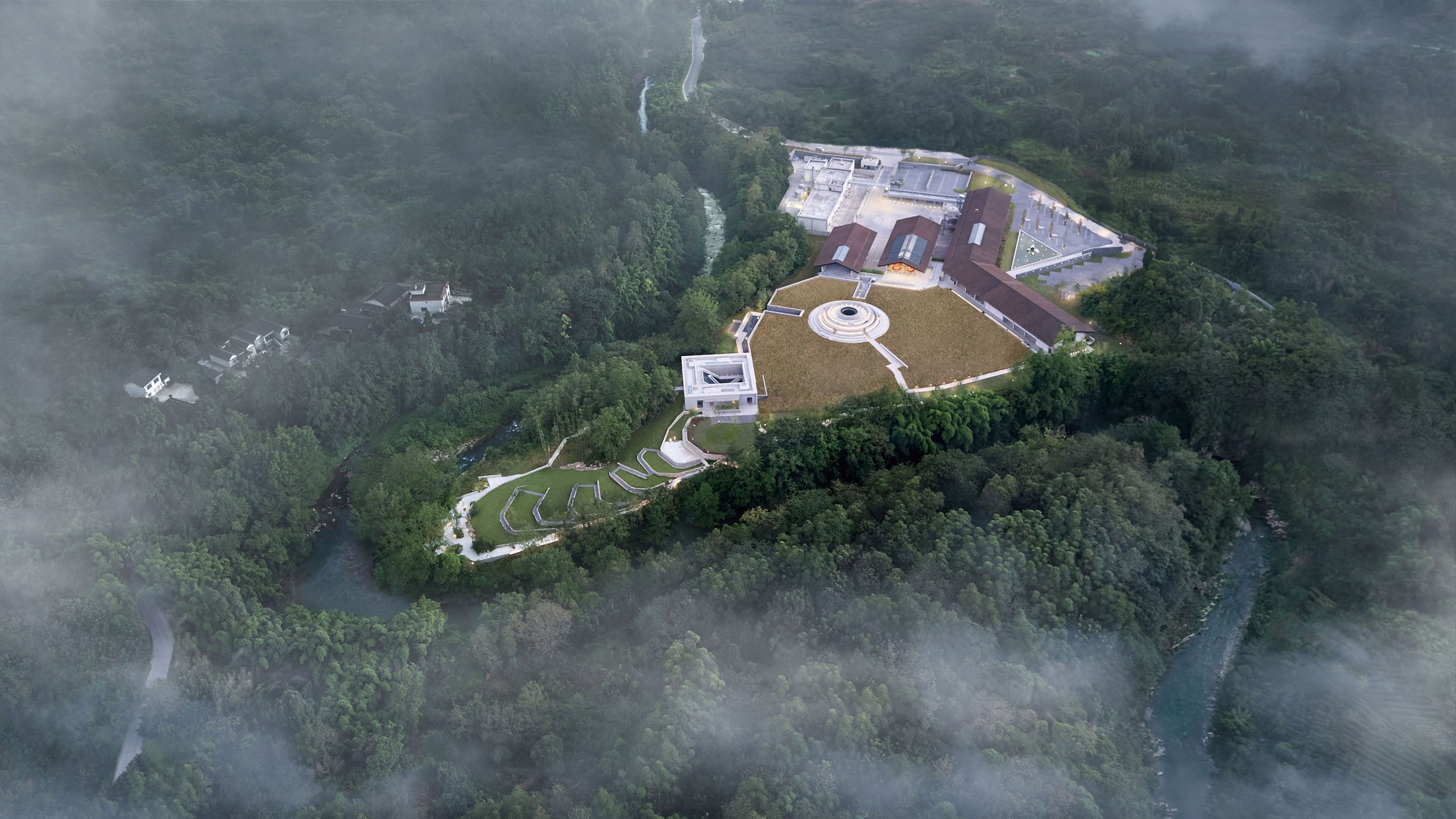
Photography © Pernod Ricard Asia.
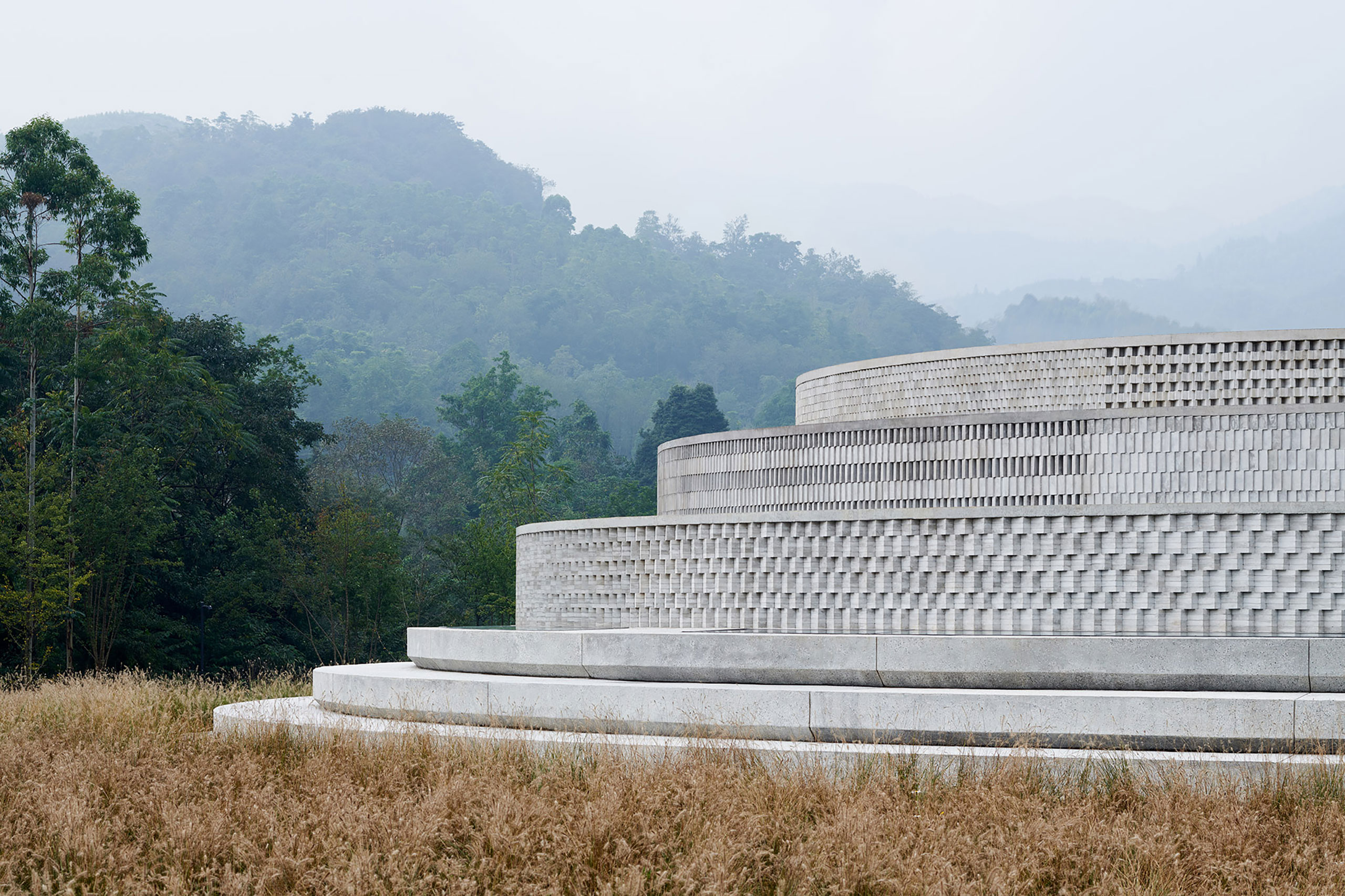
Photography by Chen Hao
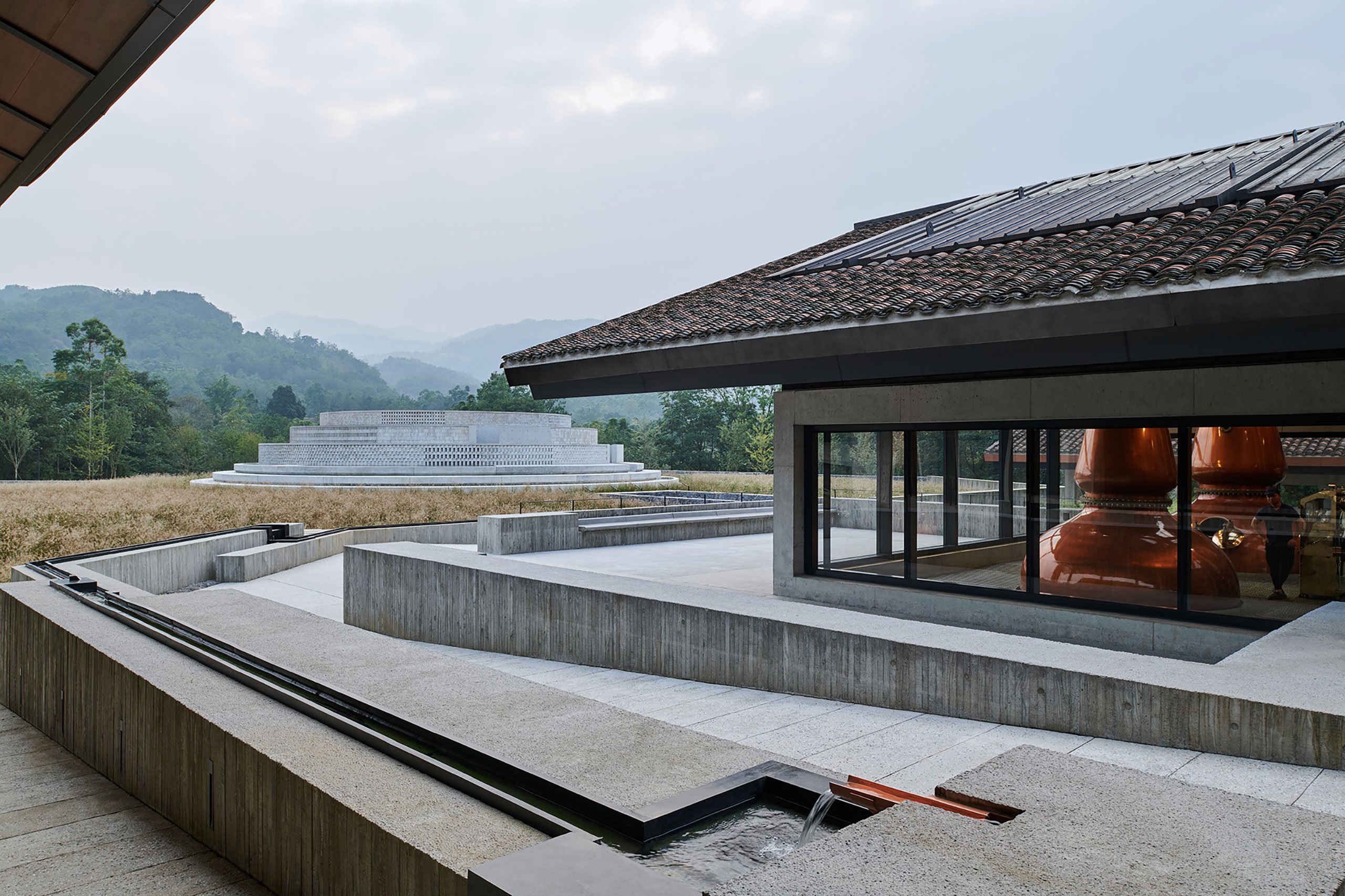
Photography by Chen Hao

Photography © Pernod Ricard Asia.
The winning design of an international competition, Neri & Hu’s proposal draws upon the notion of the duality of natural elements, a tenet of ancient Chinese philosophy which holds that two opposite forces or elements can actually complement each other in the natural world, as embodied by the site’s mountain-water duality – the property is surrounded on three sides by a winding creek, while the majestic Emei peak looms in the background. The yin and yang concept also pays tribute to the site’s storied history – this land was once an impressive monastery, the site of several historic battles, and a stopping point along many pilgrimage and trade routes – as well as reflects the distillery’s dialectic ethos which combines Scotland’s whisky making know-how with the use of Emei’s water which is renowned for its superb quality.
The practical and symbolic importance of water was not lost on Neri & Hu who lyrically integrated water features such as reflecting pools and fountains in the architecture thereby making water a guiding companion to visitors as they navigate the property. Upon entering the grounds, a triangular reflecting pool sets the tone with its calming sensibility, while the polished stainless-steel rock-like sculpture in the middle of the pond encapsulates a sense of heartfelt respect for the site’s natural resources. Titled "Fractal Structure – Infinite Shan Shui", contemporary Chinese artist Zhan Wang’s work is an exact replica of a boulder found during the project’s construction.
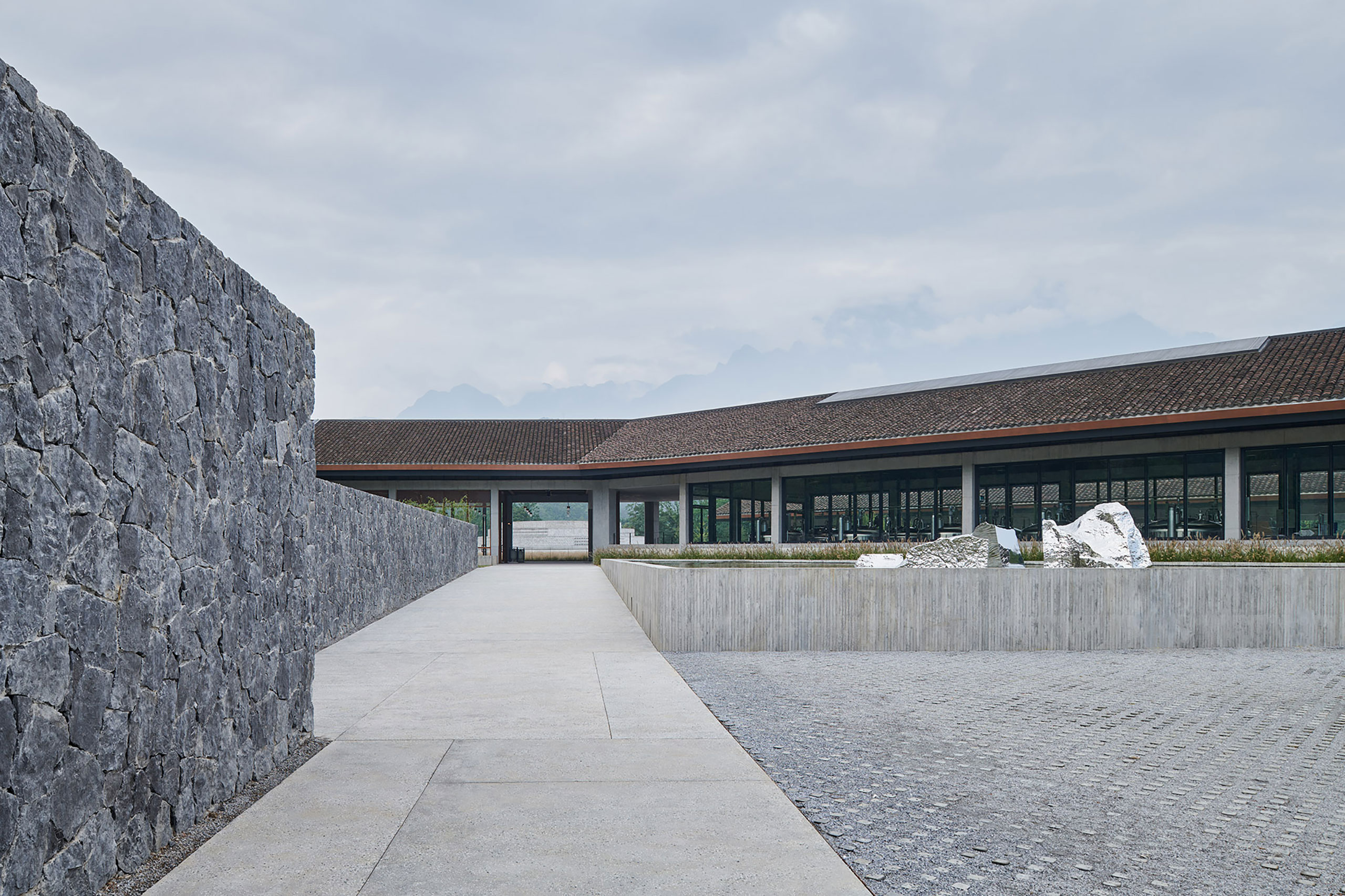
Photography by Chen Hao
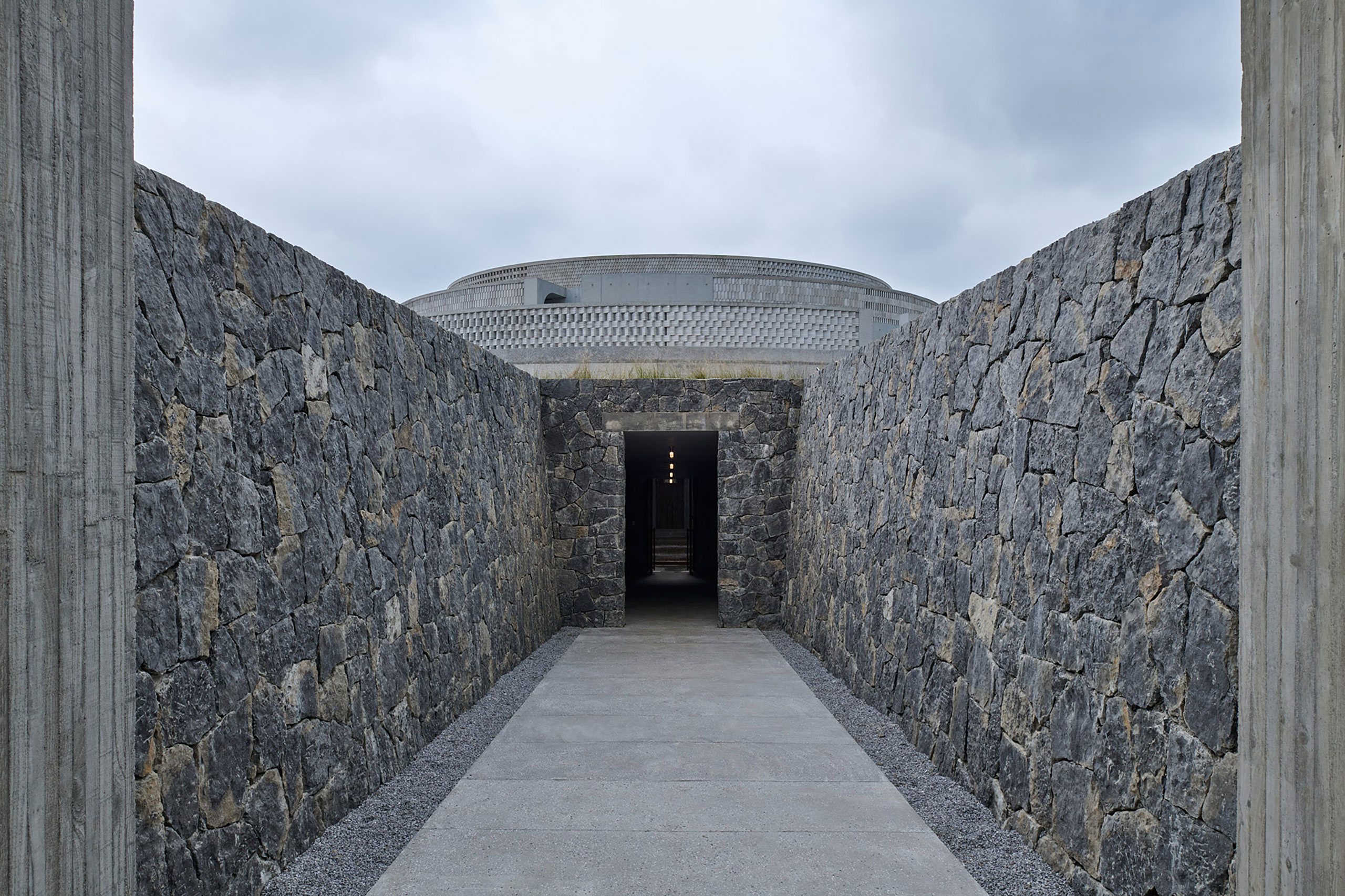
Photography by Chen Hao
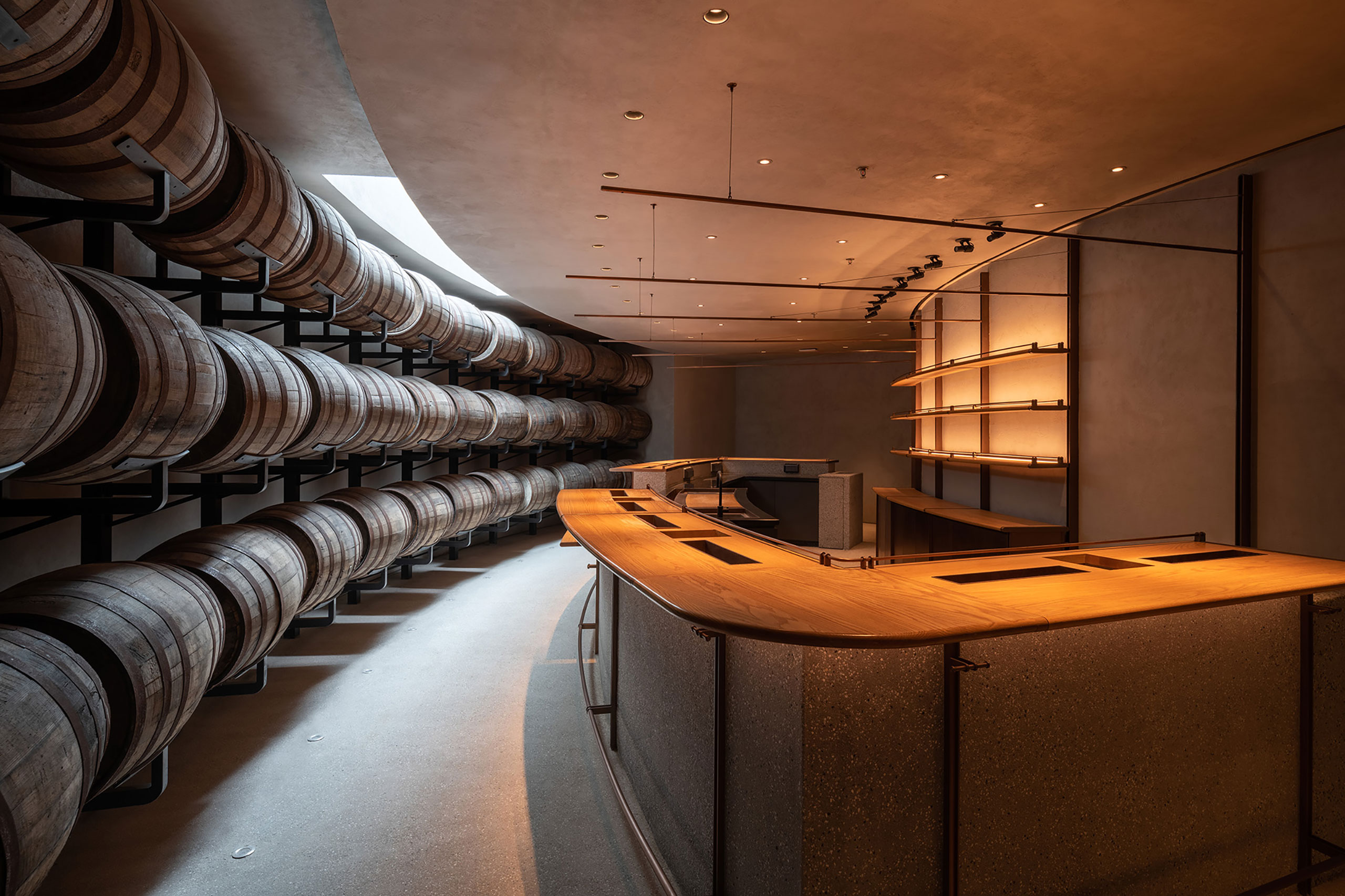
Photography by Chen Hao
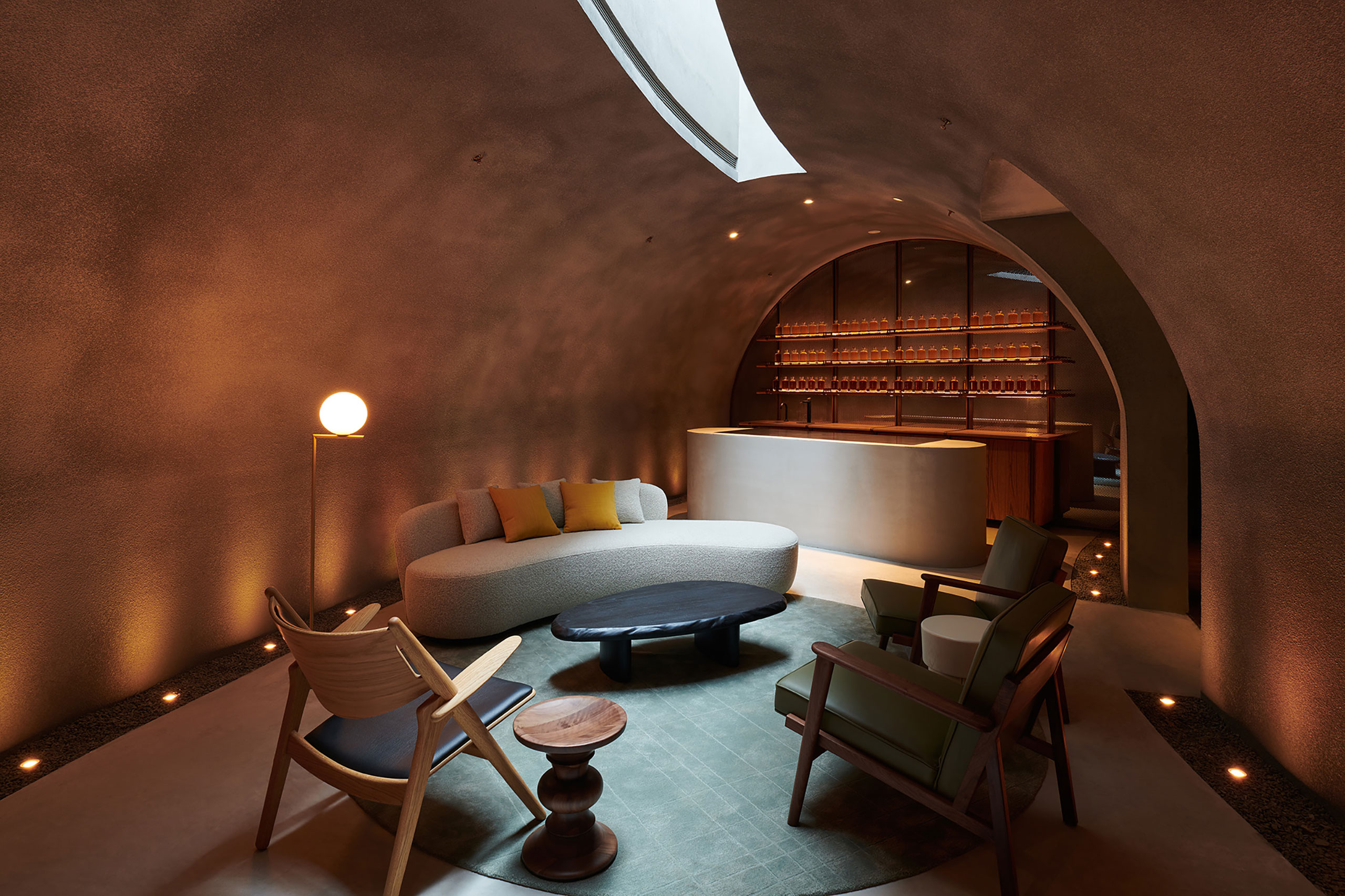
Photography by Chen Hao
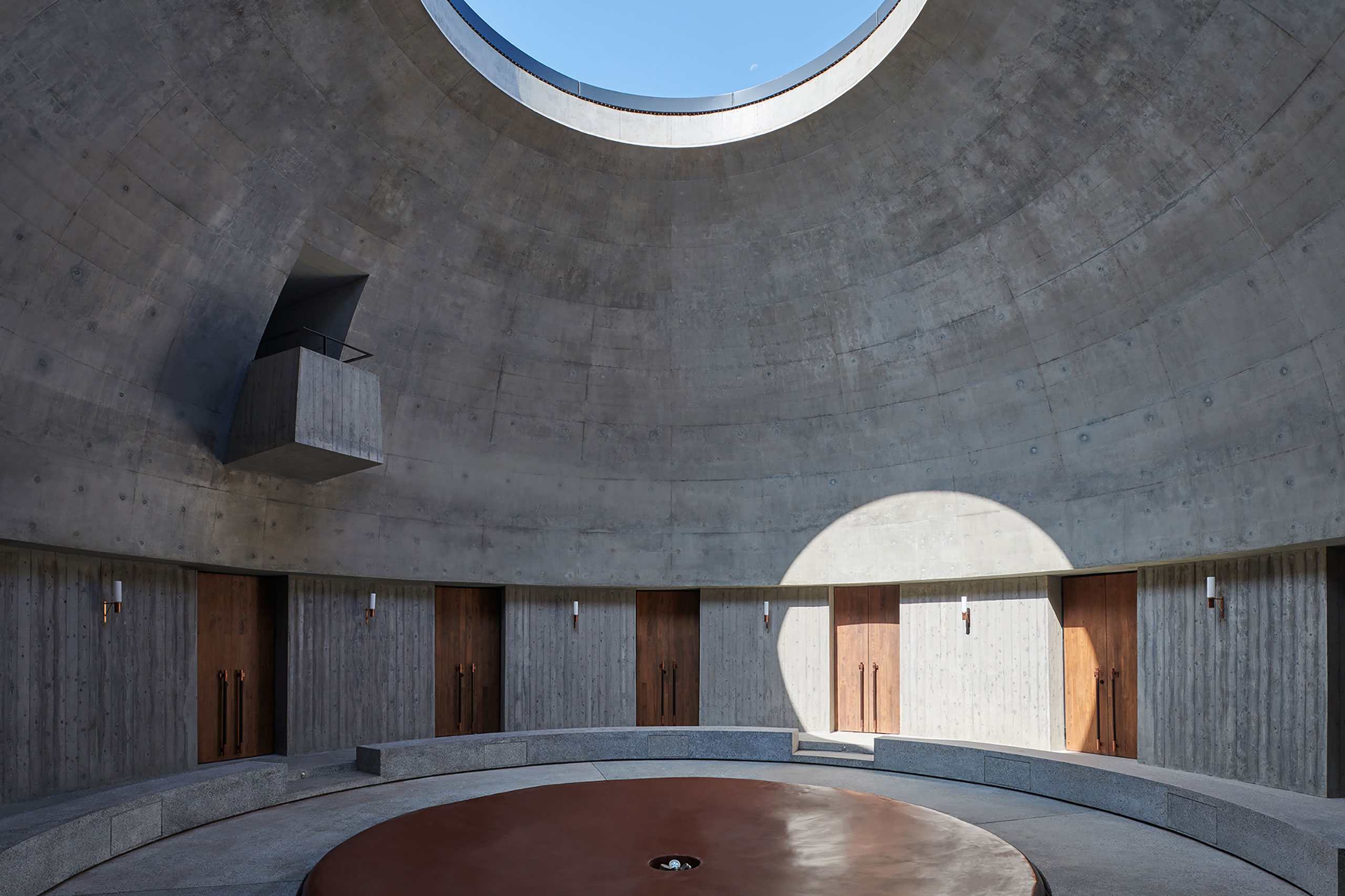
Photography by Chen Hao
Tucked into the terrain’s natural slope, the three long buildings at the north end of the site house the whisky production facilities, including a visitor’s lounge inspired by the traditional tea houses of Sichuan and two giant copper stills hand-crafted by renowned Scottish coppersmith Forsyth. Featuring pitched roofs lined with reclaimed clay tiles, and masonry walls made from locally extracted stones, the humble, low-slung, concrete-frame buildings subtly fuse traditional Chinese and modern architecture. In contrast to the vernacular underpinnings of the distillery buildings, the two visitor centres are built upon fundamental geometries, the circle and the square, which in Chinese philosophy represent heaven and earth.
Circular in footprint, the subterranean tasting building is centred on a domed courtyard around which three tasting rooms, a cocktail room and a VIP cellar can be found. Constructed in board-formed concrete, the texture of the walls echo the oak barrels in which the whisky matures, while a dramatic water feature in the middle of the courtyard draws attention to the importance of water in the distillation process – the water flowing from a central oculus cascades down onto a shallow copper bowl echoes the distillery’s hand-made copper stills. While all this is happening below ground, three concentric brick rings that mirror the silhouette of Mount Emei, subtly mark the building’s presence
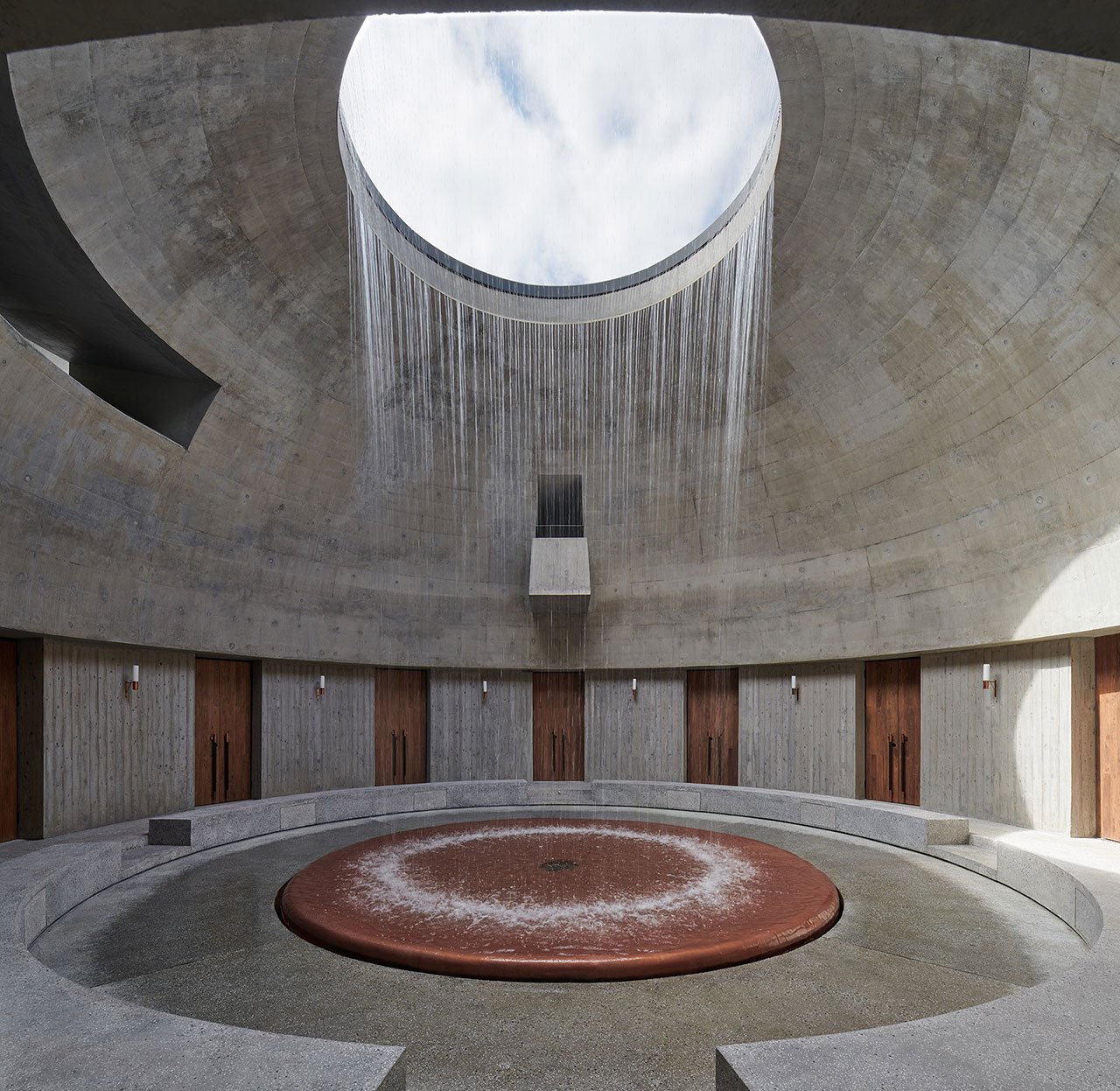
Photography by Chen Hao

Photography © Pernod Ricard Asia.
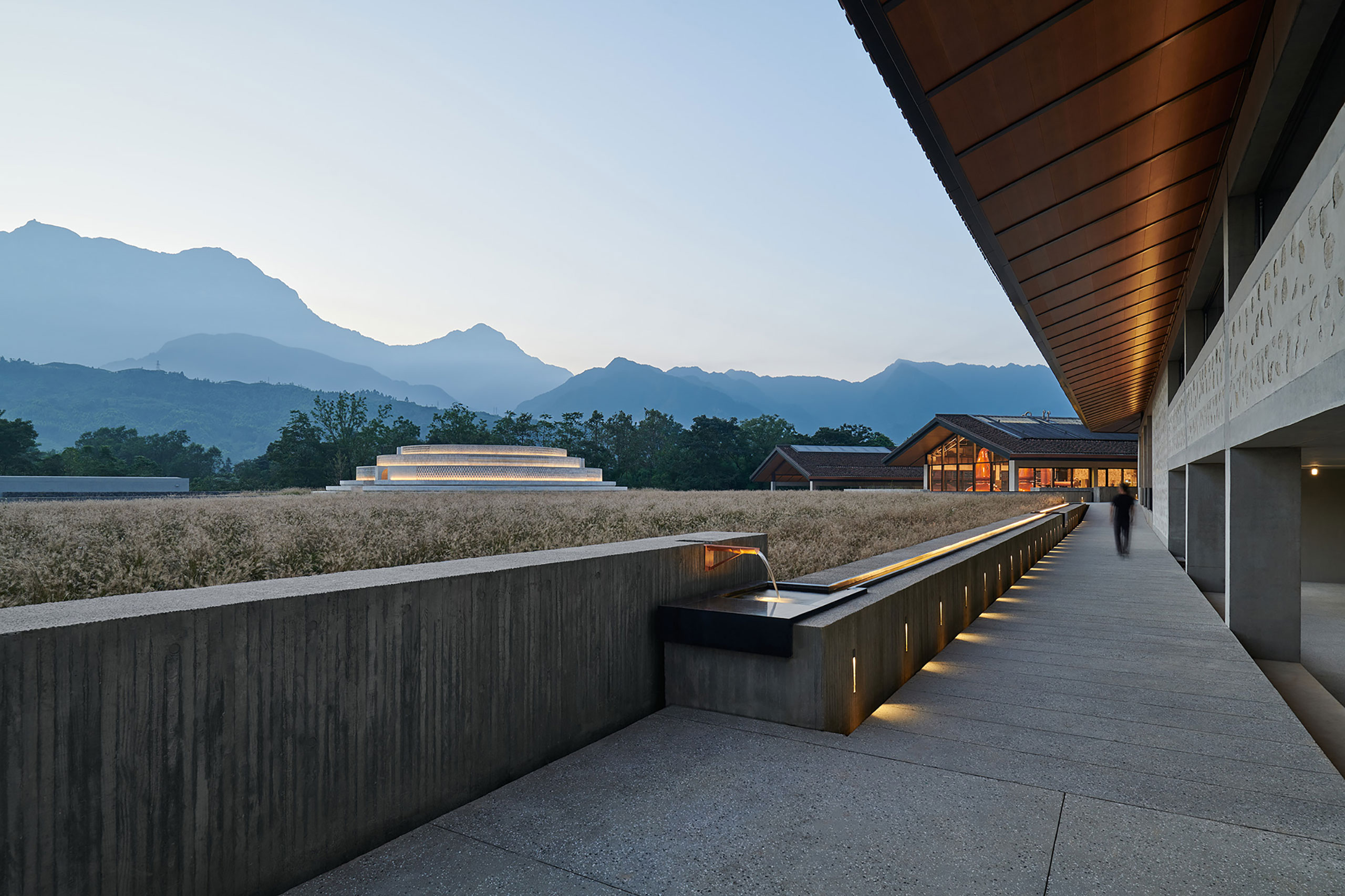
Photography by Chen Hao
Further down the slope, the square-shaped restaurant and bar building is cantilevered on two sides with one corner hovering over the river bank. At the heart of the building, an open-air courtyard that beautifully frames the Emei peak contains another immersive water feature, with water gently flowing down a ceremonial set of stairs to form a pool that reflects the surrounding nature. At the top of the stairs, a rooftop viewing platform that allows visitors to take in the majestic landscape in all its glory rounds up the amenities in breath-taking fashion, further enhancing, in the architects’ words, the “harmonious balance between architecture and landscape, between industry and visitor experience, between mountain and water”.
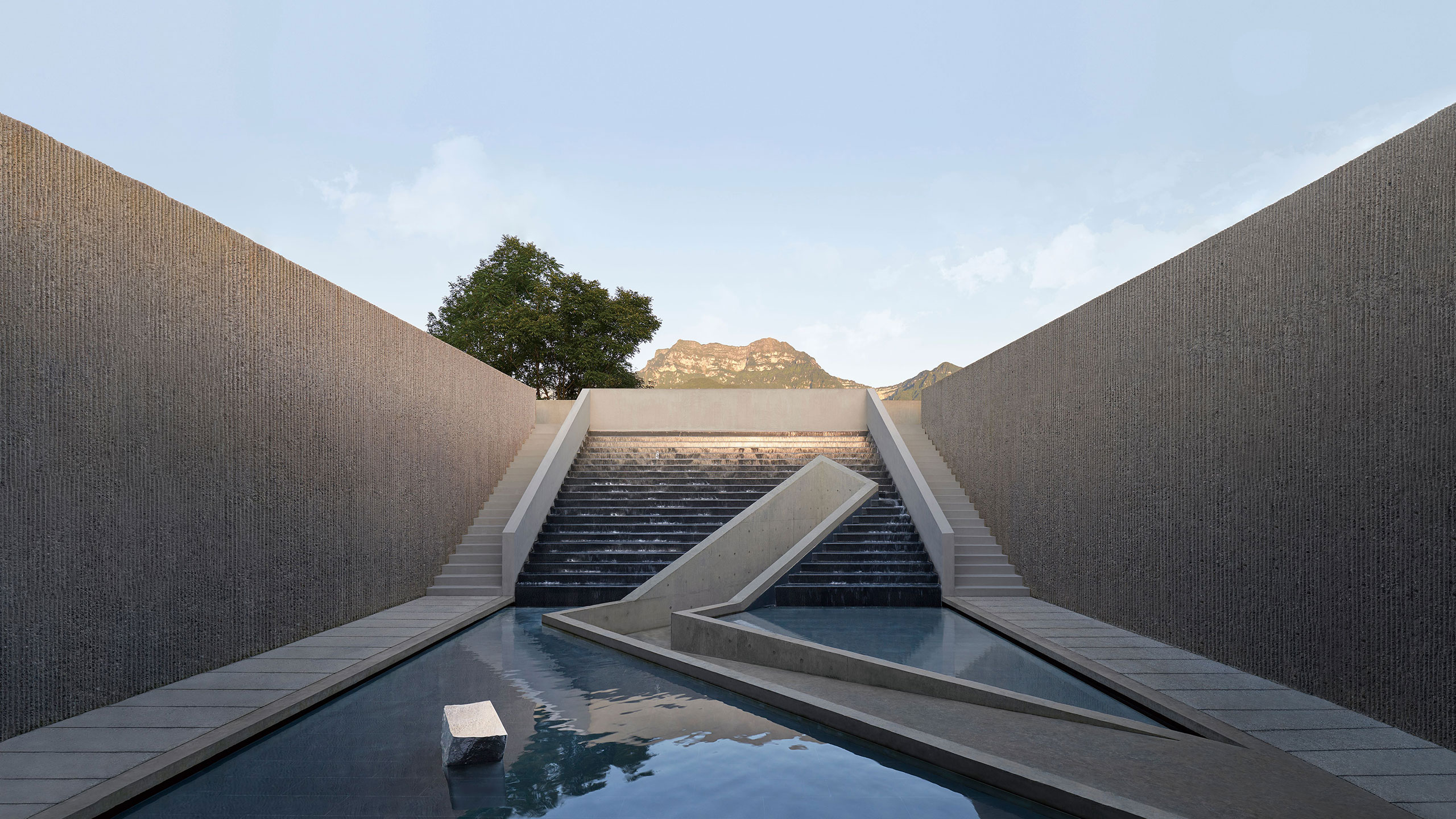
Photography © Pernod Ricard Asia.
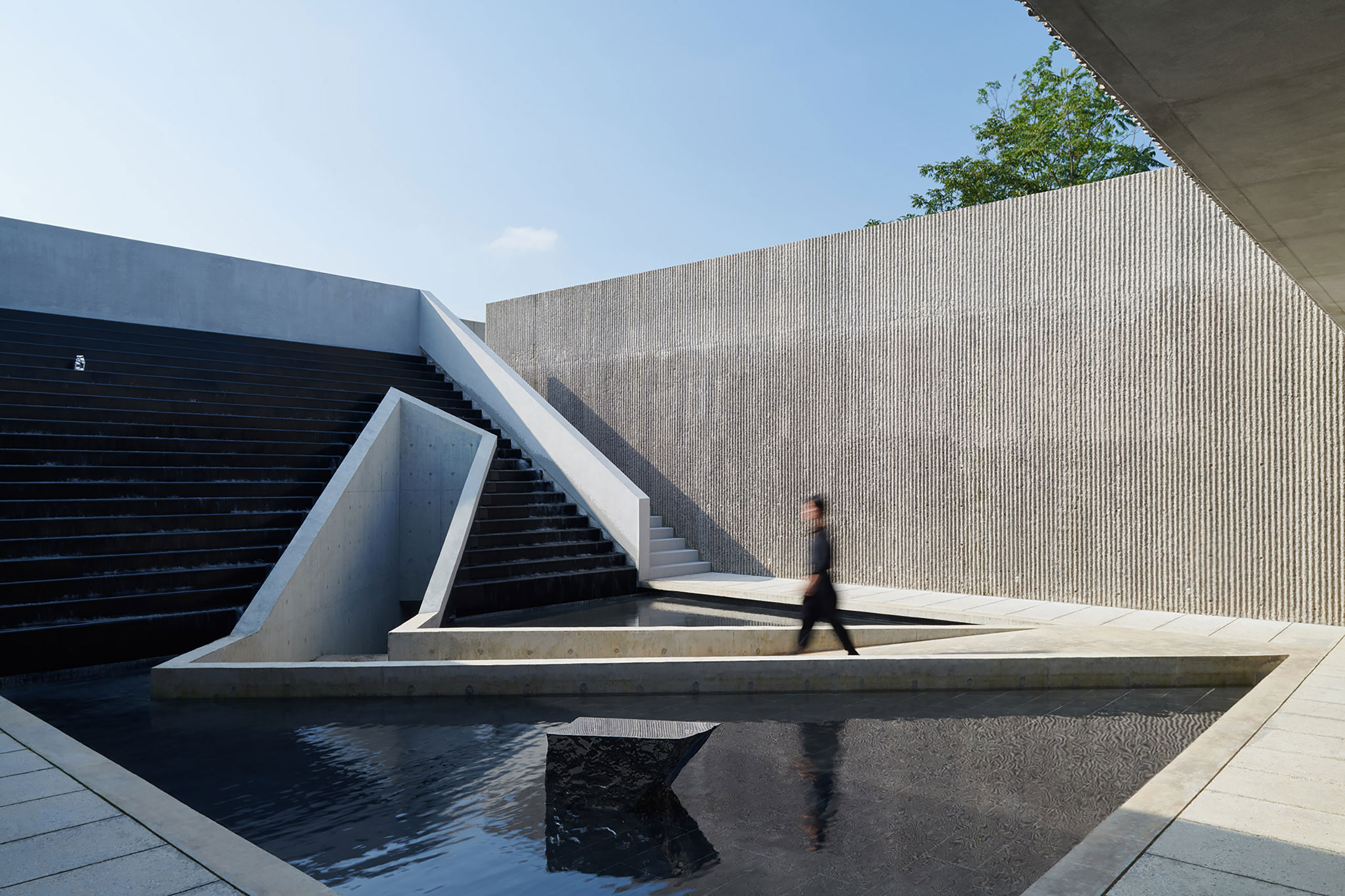
Photography by Chen Hao
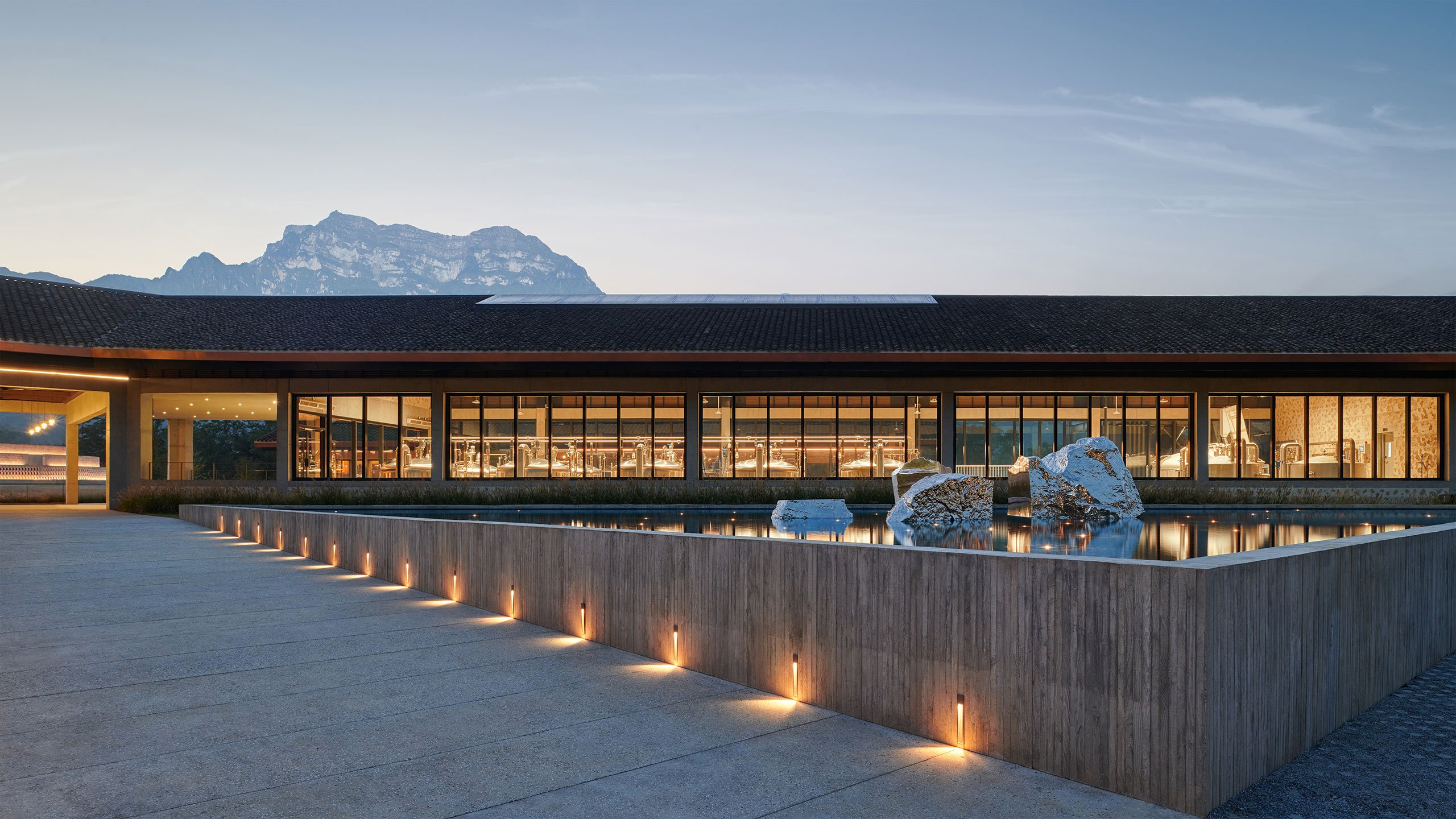
Photography © Pernod Ricard Asia.

Photography © Pernod Ricard Asia.
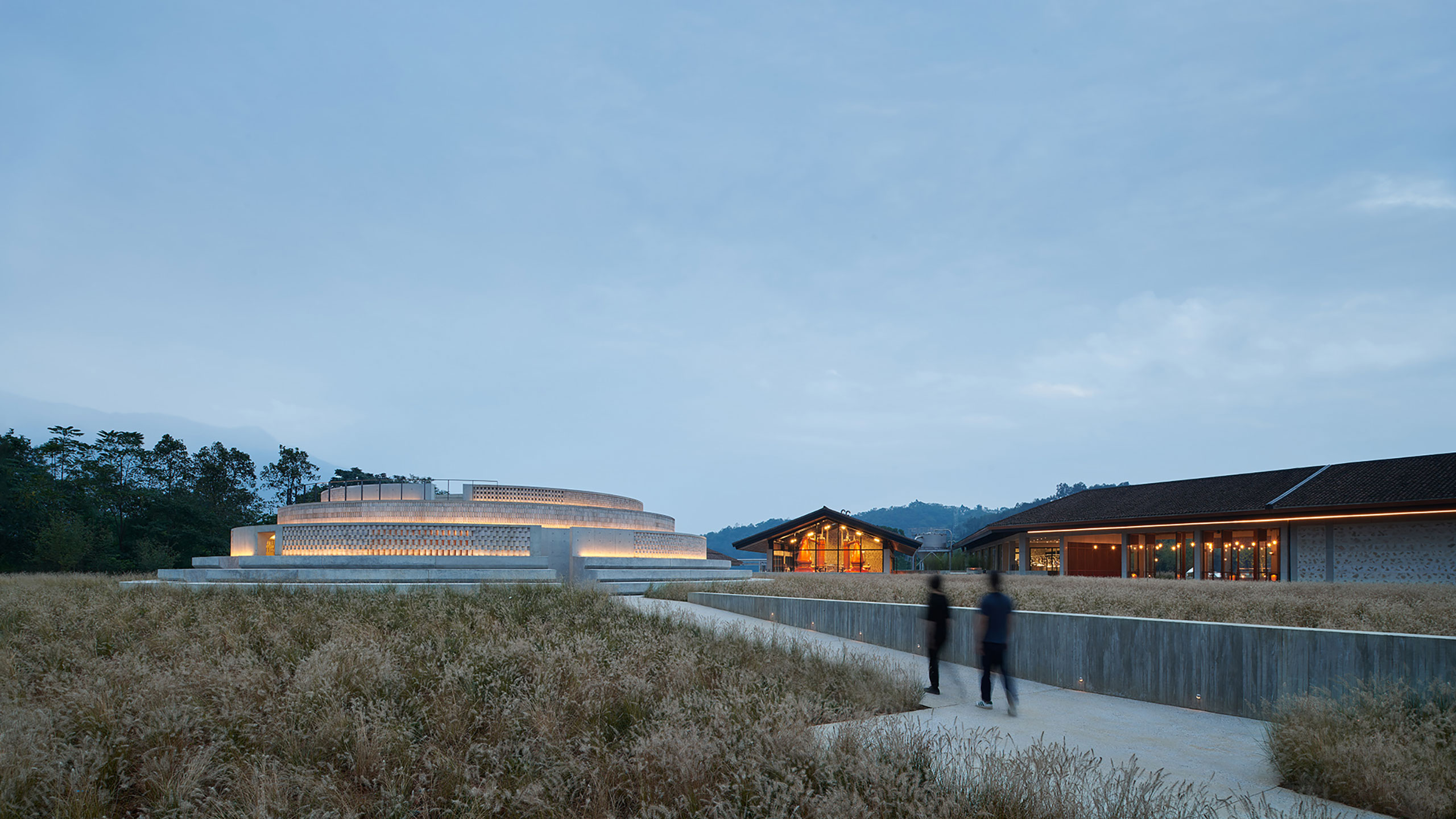
Photography by Chen Hao





